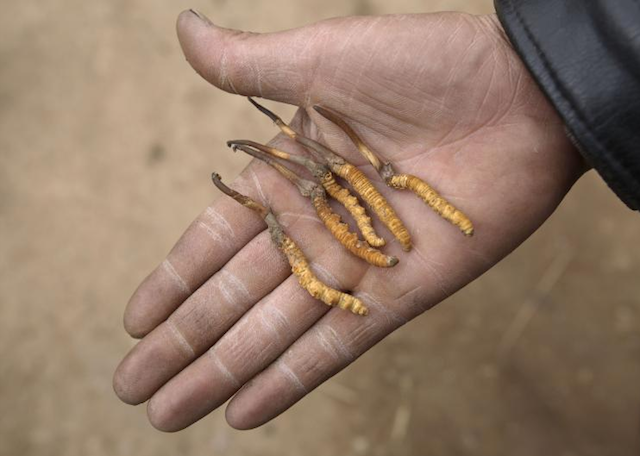
The Cordyceps Sinensis Mushroom
Mushrooms are fascinating organisms that play a vital role in ecosystems worldwide. They belong to the fungi kingdom, and like other fungi, their reproduction is unique and intriguing. At the heart of mushroom reproduction are spores—tiny, microscopic structures with incredible adaptability and dispersal capabilities.
In this article, we’ll delve into the science behind the best mushroom spores, exploring their role in fungi reproduction and their significance in the natural world.
1. Introduction to Mushroom Spores
Mushroom spores are reproductive cells produced by fungi as part of their life cycle. Unlike plants, which produce seeds, fungi reproduce through spores, which are single-celled structures capable of developing into new fungal organisms under suitable conditions. Mushroom spores are incredibly diverse in shape, size, and color, with each species of fungus producing spores uniquely adapted to their environment.
2. Spore Formation and Dispersal
Spores are typically produced within specialized structures called fruiting bodies or sporocarps, which are the visible above-ground structures commonly known as mushrooms. Inside these fruiting bodies, microscopic spore-producing structures called basidia or asci develop, eventually releasing mature spores into the surrounding environment. Spores are dispersed through various mechanisms, including wind, water, animals, and insects, allowing fungi to colonize new habitats and spread their genetic material over vast distances.
3. Adaptability and Survival
Mushroom spores are remarkably resilient and adaptable, capable of surviving in a wide range of environmental conditions. They can remain dormant for extended periods, waiting for favorable conditions to germinate and grow into new fungal organisms. Some mushroom spores have protective coatings or structures that enhance their resistance to desiccation, heat, and other environmental stressors, ensuring their survival in challenging habitats.
4. Germination and Growth
When conditions are favorable, mushroom spores germinate and begin to develop into new fungal organisms. Germination typically involves the spore absorbing water and nutrients from the environment, triggering the growth of a tiny, thread-like structure called a hypha. As the hyphae grows, it branches and forms a network of interconnected filaments known as mycelium, which serves as the vegetative body of the fungus. Under suitable conditions, the mycelium produces fruiting bodies, completing the reproductive cycle.
5. Ecological Importance
Mushroom spores play a crucial role in ecosystems, contributing to nutrient cycling, soil formation, and biodiversity. Fungi are essential decomposers, breaking down organic matter and recycling nutrients back into the ecosystem. Mushroom spores facilitate this process by colonizing dead and decaying organic material, accelerating decomposition and releasing nutrients that are essential for the growth of plants and other organisms. Additionally, fungi form symbiotic relationships with plants, helping them absorb water and nutrients from the soil and enhancing their resilience to environmental stressors.
6. Human Uses and Applications
Beyond their ecological significance, mushroom spores have numerous human uses and applications. They are cultivated for food, medicine, and biotechnology, with certain species prized for their culinary value or medicinal properties. Mushroom spores are also used in scientific research and education, providing valuable insights into fungal biology, genetics, and evolution.
Additionally, they have potential applications in bioremediation, waste management, and biofuel production, offering sustainable solutions to environmental challenges.
Final Thought
Mushroom spores are marvels of nature, representing the reproductive prowess and adaptability of fungi in the natural world. Their role in fungi reproduction is essential for ecosystem functioning, nutrient cycling, and biodiversity, shaping the landscapes we inhabit and sustaining life on Earth.
By understanding the science behind mushroom spores, we gain a deeper appreciation for the intricate and interconnected web of life that surrounds us, and the vital contributions that fungi make to our planet’s health and sustainability.

















Follow Us